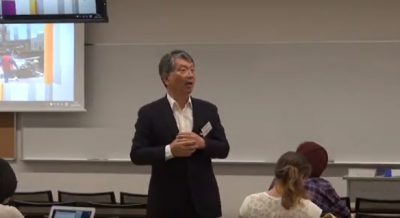| 教員/講師名 | 浦元 義照 |
|---|---|
| 開催年度 | 2018年度 |
| 開催日 | 秋学期 |
The UN defines an international migrant a person who stays outside their usual country of residence for at least one year. The world stock of international migrants is estimated 243 million or 3.3 % of the world population) in 2015 (UN DESA). With modern internet communication, mass media and mobile phone, international migration became easier than ever. It is no longer kept secret that many parts of the world are faced with lack of employment opportunities, political crisis, armed conflicts, poor economy, and inadequacy of social services and that many advanced countries offer better lives and opportunities for gainful employment. Informal networks of migrant workers and diaspora would provide an useful and credible source of information that could greatly facilitate the migration. Economic benefits of migration through remittances add great value to migration. In 2015, according to the World Bank, the total remittances in the world amounted to at least US$600 billion, enough to boost demand and GDP in sending countries. They are almost 4 times the value of total ODA and charities.
Migrant sending countries are actively engaged in promoting migration and protection their nationals in destination countries. In the meanwhile destination countries face declining population and labour shortage. Sustainability of the economy, leave aside its growth, is at risk. Aging population in many destination countries would face difficulties in receiving adequate pension and social services for their retired life. Migration is a serious agenda for such countries. Bilateral and multilateral agreements are employed to agree on the terms and conditions of migration. What would be the policies of sending and destination countries that best serve their interest?
The human migration is critical global issues that affect national economies both migrants and natives. How could labour migration be effectively managed for further development of the world economy? What regulatory framework should be developed in order to protect them from abuse? How could the social protection measures be extended for those migrant labourers? What can the governments, civil society, non-government organisations, and international organisations do to protect them?
Throughout the interdisciplinary course on Migration and Development, causes and consequences of migration will be the cross-cutting themes. Specific subjects of the course include: (1) dimensions and dynamics of international migration, (2) Causes and consequences of labour migration in sending countries, (3) Theories of migration, (4) Migration policies of destination countries, (5) Undocumented migration and protection of migrants, (5) Brain drain, remittances and development, (6) Migrants’ integration in destination countries, and (7) future of international migration.
In order to ensure a quality learning environment, TOEFL 550, TOEFL IBT 79, TOEFL ITP 550, IELTS 6.0 or the equivalent English skills are preferred. This does not apply to FLA, Green Science and Green Engineering students as well as exchange students from universities that use English as the language of instruction. |
|
